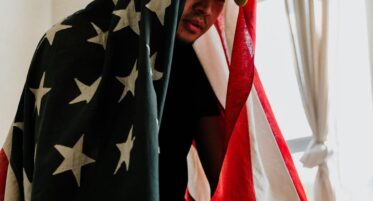
Prompt Images
How could one describe summer 2023? By its glitzy outfits? Or broken records? What about its hot pink explosion? Or fighters for equal pay? All are correct, because this summer has truly become a celebration of the power of women.
From the playful world of Barbie, to the stages of the Taylor Swift Eras Tour and Beyoncé’s Renaissance Tour, to the Women’s World Cup pitch where players are more than just champions of the sport, we are watching women shatter records and expectations around the globe, while also serving up the reminder that we have a long way to go until the aims of feminism are accomplished. This movement is not ‘anti-man,’ but rather pro-equality for all.
As we revel in this summer of women kicking ass, let us celebrate by carrying this heroine vibe beyond the screen, and into our reading lists. Your assignment this summer, if you choose to accept: to check out this list of stories written by and centered around women who broke barriers and analyzed what it’s like to be a woman in our world, past and present.
Carrie Soto is Back by Taylor Jenkins Reid
Fair warning: you’re probably not going to like the titular character right off the bat. Branded by the press and herself as the greatest tennis player of all time (pre-Venus and Serena), Carrie Soto is known as the Battle Axe on and off the court for her sharp playing style and brutal honesty, which has left her without a ton of friends. She makes even fewer when, five years into retirement, she decides to return to the game after her record for most Grand Slam titles is challenged. As she tries to prove herself to the world, she is forced to walk the line between being revered by her fans and reviled by the critics telling her that her moment in the sun is over.
Carrie Soto’s determination, alongside her brashness, unwillingness to apologize for her greatness, and relatable vulnerability and insecurity that will make you come to love her. In a time when women can be extraordinary, but are expected to act as if they haven’t fought for that status, Carrie Soto is a hero for us all.
Rules for Being a Girl by Candace Bushnell and Katie Cotungo
No book quite calls out the contradictory nature of girl/womanhood like Rules for Being a Girl. In fact, it is laid bare on its back cover, where the manifesto, written by the main character, Marin, is printed in metallic pink.
Marin scribes this essay in her school newspaper after her English teacher kisses her without her consent, an act which he then blames on her. Others, including Marin’s own best friend, follow suit when she confides in them, and she finds herself experiencing more consequences than her teacher. Faced with such blatant sexism, Marin takes it upon herself to fight back. Through the paper and a book club, she seeks to educate herself and her schoolmates on the double standards facing women. In the process, she learns (and reminds us) that to break down systems of power means confronting the misconceptions and prejudgements we built about others, including those of the opposite gender, who can be our allies.
Untamed by Glennon Doyle
For years, Glennon Doyle connected with people through sharing her stories of addiction, faith, family, and her marriage to then-husband Craig. Then she met USWNT soccer legend Abby Wambach, fell instantly in love, and everything changed. In her memoir Untamed, Doyle unpacks this time of realization and transformation, analyzing the societal constructs, including gender and sexual orientation, that keep people from living as their authentic selves.
One of the most powerful ways she demonstrates this is found in the opening pages of the book, where Doyle recounts taking her daughter to a zoo, where they watch a cheetah—domesticated to believe it is a dog—run around the exhibit chasing a stuffed animal attached to an ATV. In the distance, the cheetah hears a noise that perks its ears and causes it to prowl around, reverting into its nature despite all efforts to train it to be otherwise. Doyle argues that we are this cheetah, living a life within structures and ideologies, but still, at our heart, unable to deny our true selves, our “knowing.”
Her message of living untamed carries through the entire book, as she encourages women as well as people of all gender identities to answer to “their knowing,” and in her words, to “not stay, not ever again – in a room or conversation or relationship or institution that requires” us to abandon ourselves.
We Deserve Monuments by Jas Hammonds
It’s difficult for a novel to handle one weighty topic tactfully, and yet, Jas Hammonds’s We Deserve Monuments handles multiple with insightful grace.
The story centers around Avery Anderson, who must leave the home she knows in D.C. to move with her family to Georgia to care for her estranged grandmother. Avery quickly finds much to enjoy in her home一new friendships, loves, and a relationship with her grandmother. But she also learns that all is not well in her new town, with secrets and deeply entrenched attitudes on sexual orientation and race thick in the atmosphere.
It is a gut-punch of a narrative that simultaneously analyzes what it means to wear the labels of mom, daughter, queer, and Black woman, while also learning to define one’s self within them.
The classics: Pride & Prejudice by Jane Austen, Little Women by Louisa May Alcott, and Their Eyes Were Watching God by Zora Neale Hurston
These three classic novels tell very different stories, and yet they are all rooted in a common trait: They are examinations of womanhood and of the different ways we as humans yearn.
In Pride & Prejudice, Elizabeth seeks a life and a love found beyond marriage for money. In Little Women, all of the March women want to forge their own path, be it Meg in motherhood, Jo as a writer, Amy as an artist, or Beth with a life beyond sickness. In Their Eyes Were Watching God, Janie longs to have a voice that isn’t stifled by her marriages or her role in society.
It is in this relatability that these books cement their “classic” status. While they are reflections of their time, the characters and their desires are just as understandable now decades一in some cases centuries一after their initial publishing.
Honorable mentions you should check out:
A Good Girl’s Guide to Murder by Holly Jackson
Lessons in Chemistry by Bonnie Garmus
The Hunger Games Trilogy by Suzanne Collins
The Love Hypothesis by Ali Hazelwood (and her other STEM novels)



